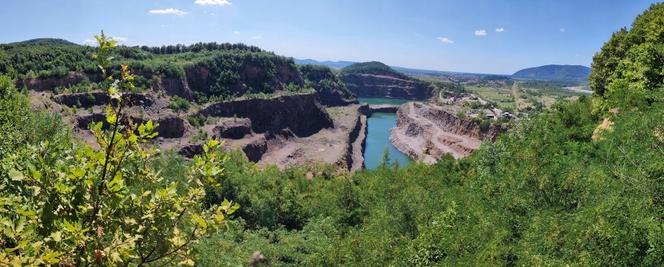


Homo erectus was quite a traveler! Appearing in East Africa around 2 million years ago, fossils have been found as far as Asia, on the Indonesian island of Java, 1.4 million years ago, as well as in China, the Caucasus, and Western Europe, before its last representatives disappeared around 100,000 years ago. It turns out that Homo erectus was present in Ukraine around 1.4 million years ago. An article published on March 7 in Nature proposes new datings of stone tools found in the 1970s in a quarry in Korolevo. These tools are attributed to Homo erectus, even though no fossils of the hominin have been found on site.
Roman Garba, from the Czech Academy of Sciences in Prague, and his colleagues employed a method based on radioisotope decay to where the carved stones were buried. This date of 1.4 million years "establishes a temporal and spatial bridge concerning human dispersal, between the Caucasus (around 1.8 million years ago in Dmanissi, Georgia) and south-western Europe (around 1.2 million years ago in Atapuerca, Spain, and Vallonnet, France)," the researchers noted.
Véronique Michel (CNRS Cepam, Nice), a specialist in Paleolithic dating, welcomed the documentation of such a northerly human presence at this remote period. But she noted that the study's authors only mention in passing sites potentially just as old in Spain and Italy. "In Orce, southern Spain, two sites have been solidly dated: Fuente Nueva-3, at around 1.19 and 1.5 million years, depending on the methods used, and Barranco Leon, at around 1.4 million years," she pointed out. She also cited Pirro Nord in northern Italy, dated between 1.3 and 1.6 million years, by biochronology – based on the animal species found at the site. "To retrace the history of colonization, you have to cite all the sites," she observed.
Radioisotope specialist Régis Braucher (CNRS Cerege, Aix-en-Provence) wasn't entirely convinced by the models used by his colleagues to refine the dating. "With a more conventional method and the same data, I get a date of 1.3 million years, plus or minus 200,000 years," he explained. This makes the Ukrainian site a possible contemporary of West European sites and weakens the hypothesis presented in Nature. He plans to discuss the matter with his colleagues at a workshop on radioisotopes to be held in Cologne in May.

Mads Faurschou Knudsen (Department of Geoscience, University of Aarhus, Denmark) defended the method he used in this study, "even if it's true that we can't be absolutely certain that Korolevo is older" than some European sites further south. In any case, he and his colleagues wrote in Nature, "the occupation of Korolevo contradicts the proposal that populations migrated further north only after a large-scale colonization of southern Europe around 1.2 million years ago" – referring to a hypothesis put forward by Véronique Michel in 2017. Michel considers that the Ukrainian site "adds a piece to the puzzle we're trying to piece together and that this colonization may indeed also have taken place via northern Europe."
